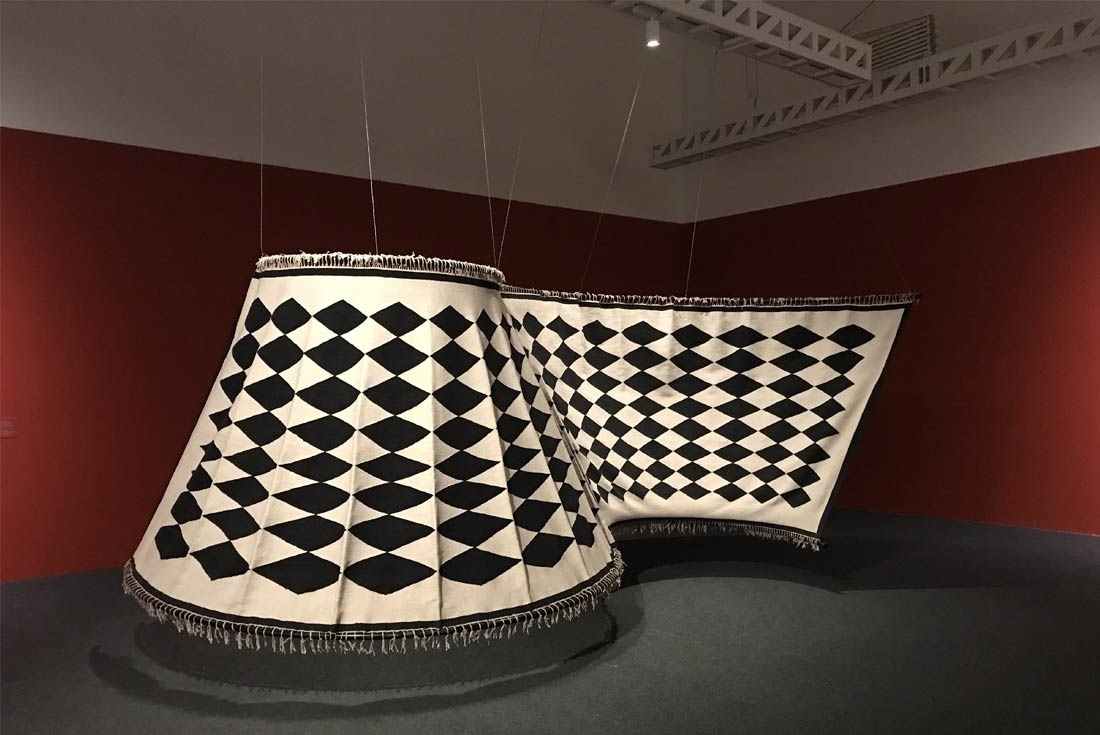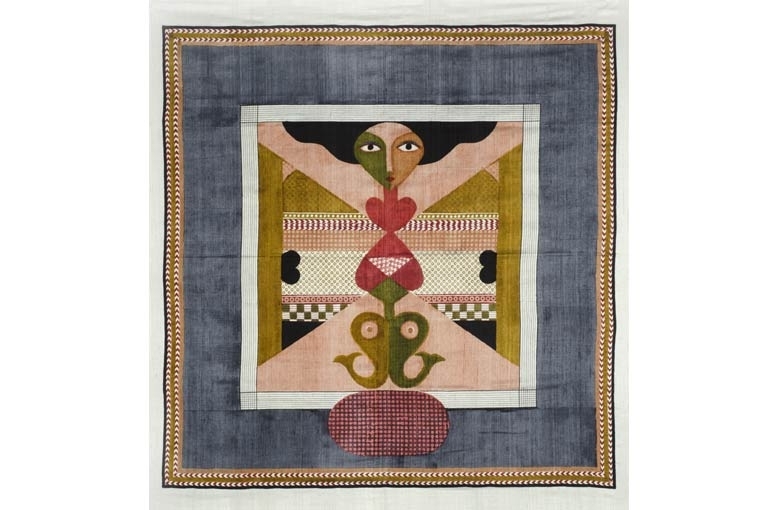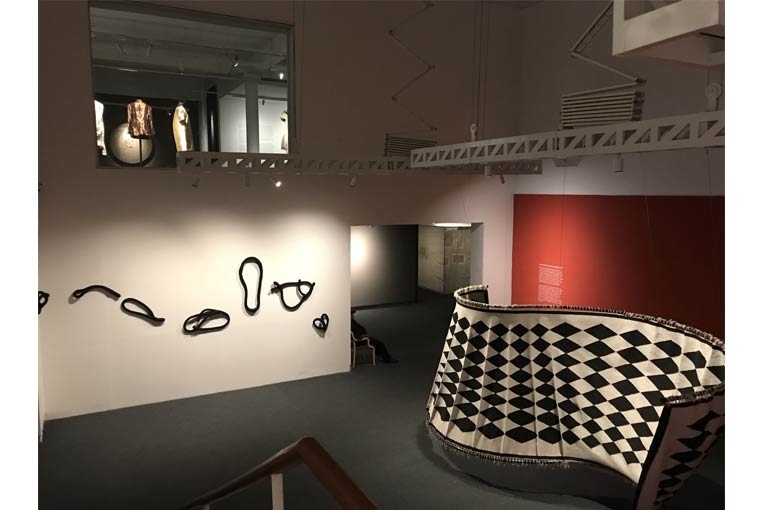
Handwoven Sculptural textile by Chandrashekhar Bheda and Mahender Singh, 2014

Handwoven Sculptural textile by Chandrashekhar Bheda and Mahender Singh, 2014
Jawahar Kala Kendra, Jaipur recently opened an exhibition which traces an evolution of aesthetics in Indian handmade textiles from the country’s independence In 1947 till now. Reflecting the fields of art, design, fashion and craft, it presents paintings on cloth, tapestries, sculpture, carpets and rugs, saris, garments and other forms of creative expression in fabric. Together, they convey the expected and often unusual journeys in materials and techniques which have shaped the explorations of creative makers, master artisans, craftspeople, artists, designers as well as experimental, niche design studios and popular, well known brands.
The Indian subcontinent has, over the last seven decades, sustained processes of hand manufacture in textiles which are unparalleled in the world. Whether in the diversity of skills and technologies, vocabularies of patterns and motifs, or the sheer large scale of production capacities, such processes have suggested constant innovation in inherited traditions. Unlike the common perception that such traditions are traditionally static and bound with strict rules of making and usage, they have been observed to be dynamically influenced by new stimulus - political, social, economic, scientific - and are inspired by emerging cultural developments.
Seen in the context of the predominant impulses of various periods in India’s post independence trajectories, the textiles are presented through broad themes: The National Movement, Khadi and the effects of the European-colonial encounter in the early to mid 20th Century; the engagement with International Modernism from the 1950s till today; an intense revival period in village-based crafts and textiles beginning with the 1970s which has informed the present ecology of urban design; the negotiation of roles between artisans-craftspeople, designers and artists; a return to historical vocabularies from the 1980s onwards which moulds contemporary fashion and mass consumerism; textiles as a means and metaphor for sculpture; and Indian minimalism.

Untitled Prabhakar Barwe
1981-82 Silk, Hand-painted With acid dyes
The artists and designers whose works are being presented include Andrew Ananda Voogel Aneeth Arora, Amit Aggarwal, Anavila Misra, Ajit Das, Ashdeen Lilaowala, Asif Shaikh, Bashobi Tewari, Berenice Ellena, Bhikari Maharana, Chandrashekhar Bheda, Charu Wadhwa, Ghiora Aharoni, Gunjan Jain, Hashim Mohammad, Jadunath Supakar, Jigisha Patel, Manisha Parekh, Mahender Singh, Manisha Arora, Manuel Bougot, Monika Correa, Nelly Sethna, Paola Manfredi, Prabhakar Barve, Rahul Jain, Rahul Mishra, Rajesh Pratap Singh, Renuka Reddy, Rimzim Dadu, Riten Mazumdar, Ritu Kumar, Sanjay Garg, Shelly Jyoti, Sri Niranjan and Toofan Rafai. The studios, brands and organisations represented include 11:11, Abraham & Thakore, Akaaro, Anokhi, Avani, Bandhej, Himmatsingka Seide, Khamir, Lesage, Malkha Marketing Trust, The National Institute of Design, The Registry of Saris and The Weavers Service Centres.
The presented works are additionally drawn from relevant art and textile collections including The Devi Art Foundation, New Delhi; Ms Lekha & Mr Anupam Poddar, New Delhi; Ms Priya Paul, New Delhi; The Museum of Art & Photography, Bangalore and Dr Monisha Ahmed, Mumbai. Contributing galleries include Nature Morte and Art.Motif in New Delhi and Jhaveri Contemporary in Mumbai.
The exhibition is curated by Mayank Mansingh Kaul, designed by Reha Sodhi and commissioned by Jawahar Kala Kendra. The exhibition will be on view daily till the 31st of July between 11am and 7pm at the Museum Galleries, Jawahar Kala Kendra with the exception of Mondays and Public Holidays.

Installation image of one of the galleries in the exhibition